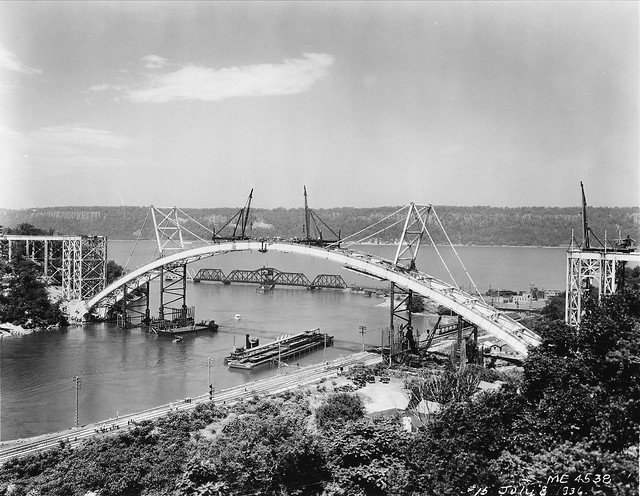A few updates for you tonight, some concerning hot-button political issues of the day. You had to know it would be hard for the MTA to escape these.
Ironing out the challenges of cashless tolling
It’s hard to believe that it’s been nearly four years since the MTA introduced cashless tolling on the Henry Hudson Parkway, but here we are. While I had originally hoped this would do away with a major objection to congestion pricing, the MTA hasn’t yet expanded this long-running pilot beyond the bridge over the Spuyten Duyvil. Now we learn why.
In a piece illustrative of the zany deals the MTA has to strike with states to which it provides various services, Andrew Tangel explores how gaps in enforcement, particularly with respect to Connecticut drivers, is slowing the process. The MTA, you say, is barred by deals it has with Connecticut from sending collections agencies after drivers who do not pay bills they receive. Although the vast majority have E-ZPasses, Connecticut drivers owe the MTA half a million dollars.
Admittedly, this is small change for one river crossing, but it’s holding up implementation at more crowded spots such as the Brooklyn-Battery Tunnel and the Verrazano Bridge. “Until we have legislation in place, it really doesn’t make a lot of sense to do it out at the larger facilities,” Don Spero, MTA Bridge & Tunnel CFO, said to The Journal.
The MTA is working to change these arrangements, but Board members are getting restless. “It’s stupid that we’re not doing this,” Staten Island’s Allen Cappelli said. “To have to sit there because you’re using antiquated equipment is insulting.” The pilot meanwhile has been a marked success as 99 percent of cars now travel across the bridge at speeds of 30 mph or more.
Transit and the NYPD slowdown
As the NYPD rank-and-file enter their third week of their unorganized-but-somehow-coordinated enforcement slowdown, transit riders seem to be shouldering the effects of the precipitous decline of “Broken Windows”-style police work. Crime isn’t up underground; in fact, subway crime — as with all city crime — is at a low. But while cops aren’t eying law-abiding New Yorkers these days, they’re also not pursuing those breaking the rules.
Vivian Yee of The Times has this:
Below ground, the slowdown has been even more profound.
Police Commissioner William J. Bratton urges officers to target minor offenses that could be preludes to more serious crimes. Last week, however, besides the lax enforcement of turnstile-jumping, a highly visible emblem of urban disorder, officers made only one arrest in the subway system in the category of “peddler/panhandler”; none for unsafe riding (down from 68 for the same period last year); none for narcotics (down from 23); and one for a knife or other cutting instrument (down from 18).
Drivers think they’ve died and gone to heaven as well as they can now park with impunity. These numbers, and the relative lack of anarchism I’ve seen in New York City lately, raise questions of what exactly constitutes the appropriate level of police work, but that’s part of a larger dialogue. As temperatures drop into the single digits this week, crime is at a low anyway. I’ll keep an eye on this story as it relates to transit riders.
MTA kills GCT ‘Die-In’ protests
It is, apparently, against MTA rules — wherever they may be posted — to lie down in Grand Central, but for the past month, the MTA has not enforced this regulation. As protesters have staged nightly “Die-Ins” to voice their displeasure with the Eric Garner Grand Jury decision, the MTA has not made a move to clear out those who choose to lie down. Now, according to The Journal, the MTA will enforce their rules, and the Die-Ins must stop.
The MTA says they’ve reassessed this decision when protestors started placing placards on the ground, but the protestors aren’t convinced. One way or another, I’m surprised at this decision as it seems to be another First Amendment beehive into which the MTA is sticking its hand. I’m no expert on right-to-assembly jurisprudence, but the MTA has lost nearly every free speech case it has faced recently. We’ll see if this goes anyway. On Tuesday, the protesters were still in Grand Central but fewer opted to lie down.







